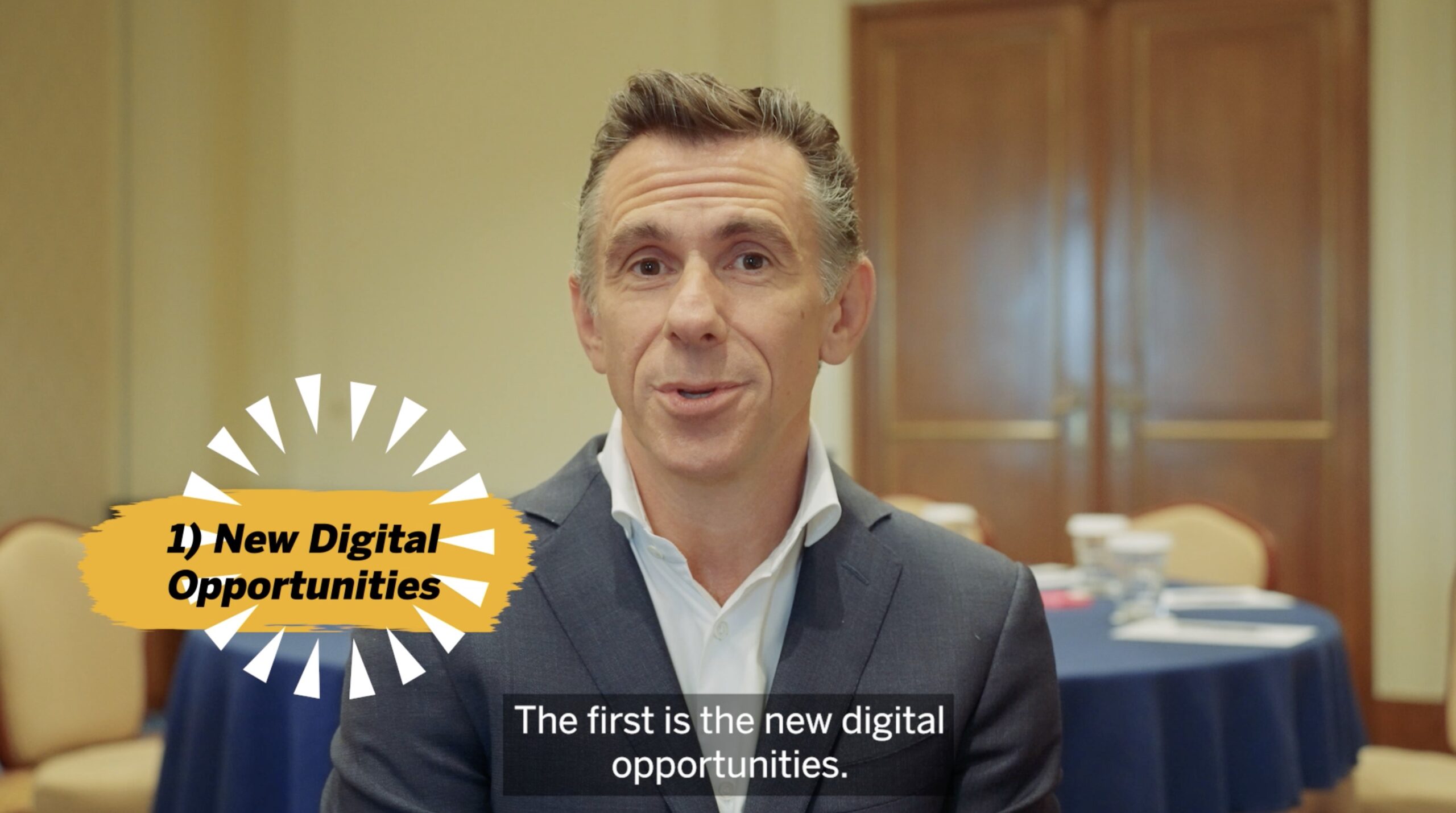And partners are an essential part of composability, because one of the ironies is that customers shouldn’t have to build anything themselves. The whole point is that other people have already had this problem, built a solution, and you can simply plug and play and put those new Lego bricks into your existing process.
So this is very much part of the move to new business models, where instead of just selling services, you can sell IP, you can sell solutions along with added services as part of your business.
The second big topic is one that everybody is interested in right now is AI. There’s a big fear of missing out of the new opportunities, and there’s a lot to talk about, but technologies like chat GPT have been the fastest adopted technologies ever, with a million users in just five days.
And these generative AI technologies allow new possibilities for creativity. It’s great for things that you can, it would take a long time to build, but you can verify very quickly. So they can help you with coding, for example. It would take a long time to code something. It turns out the chat GPT and Google Copilot and these other technologies allow even non-coders to create code, and then you can very easily check whether it’s actually real or not. Or you can use Midjourney and Dall-E to create images. You just put in some text, it creates an image. You can say, yes, that’s the image I want or not. And they’re very much iterative.
Overall, the net result is that part of all of our jobs and our organizations, the value of what they’re doing is going to be much less than it was before. So we have to be clear about what those areas might be. The good news is that there are other areas of our business, perhaps 10%, where we can do 100 times more by using these powerful technologies.
So it’s a moment to take a big step back, recalibrate, rethink what is that we’re really good at that we can leverage AI. And one of that will be about what it means to be human. One of my favorite quotes in technology is by Pablo Picasso. And it’s “Computers are useless. They can only give you answers.”
They can’t create questions. You, as a human being, can do that. You know what’s wrong. You know what needs to be fixed. And you have suggestions on how to do it. AI, ultimately, will only be a tool. It’s a very powerful tool that we can all use to create more value.
And the key is that AI on its own is useless. It takes high quality data. And most of the highest quality data in most organizations is in their SAP systems. So help get the SAP data into machine learning models, and then, on the other end, actually make sure that something happens. An algorithm can’t do anything. It has to be part of a business process, and that brings us back to that composability.
The next area is data. There’s a huge disruption around data. For a long time, we’ve always ripped data out of our core systems and put it into a data warehouse or a data lake or a data lake house or a data cloud.
Increasingly now, we can bring the technology to the data rather than the other way around. For too long, it’s been like ripping a tree out of a forest and then trying to get it to grow in a different environment. It works, but it’s a lot of hard work. You lose the roots, the metadata, the hierarchies, the real-level security. And then you have to recreate it all in this new area.
We’d like to help our customers avoid doing that with technologies like DataSphere, where people can get more value out of their data in SAP by leaving it as much as possible where it is, but providing services to other areas as needed.
Finally and I think perhaps the most important area, is people power. We have an amazing opportunity to accelerate innovation by letting business people do more of it themselves, in their area of expertise, without IT and technology being a bottleneck.
It’s the rise of the purple people. Lot of technology is now being done outside of IT, so you’ve got the blue business professionals and the red technology professionals. The purple people are what Gartner calls the business technologists in the middle that have a combination of those skills, and they’re responsible for up to 80% of new innovation in the next couple of years, according to Gartner.
Why? Well, it’s thanks to these new no-code and low-code technologies and chat GPT and these others, which means that the power users are now much more powerful.
There are dangers, though. Not everybody is ready to be enabled, and there’s the dangerous chaos where people go off and create their own end-to-end processes, but without any governance, without following the security rules, without compliance such as GDPR, or building things that simply aren’t scalable, or rebuilding the same things at different parts of the organization.
The big opportunity is not pro-code or low-code, but co-code, where you can use the SAP technologies to provide the bricks. It could be a concept like headcount, or revenue, or it could be an action like open a higher hiring position, or send an invoice.
Then you’re going to let the business people manipulate those bricks, connect them up to create those workflows, but you can be confident that they’re doing so in a governed way that isn’t going to put the enterprise at peril.
Those were the top four topics and I really hope at some point I can have the opportunity to explain more!
